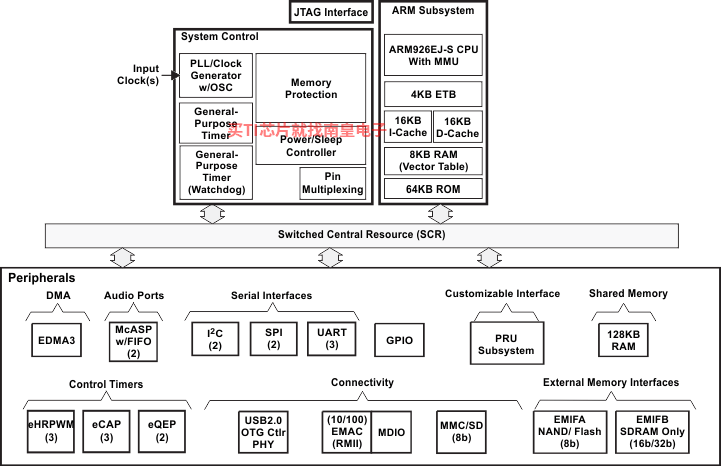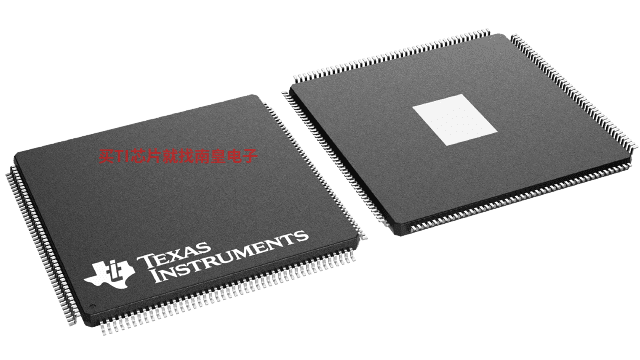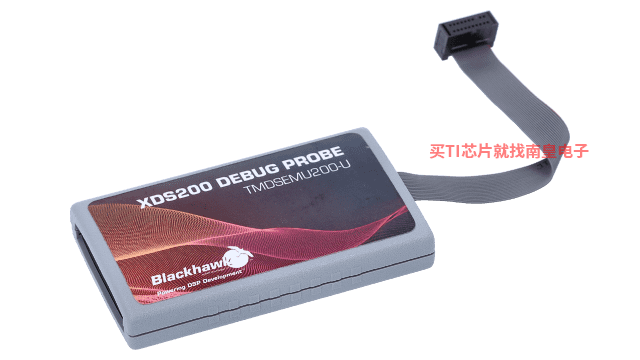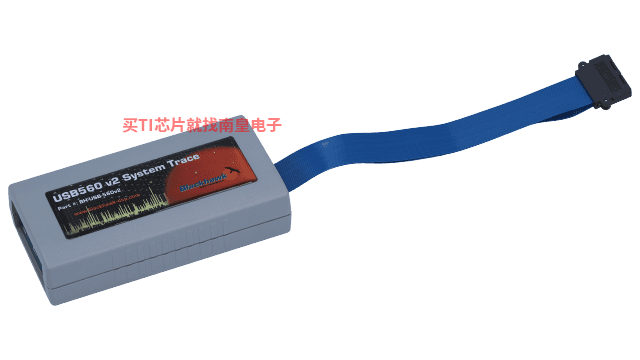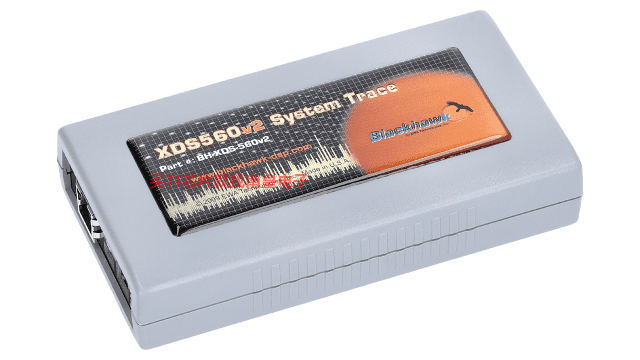
- 制造厂商:TI
- 产品类别:微控制器 (MCU) 和处理器
- 技术类目:处理器 - 基于 Arm 的处理器
- 功能描述:Sitara 处理器:Arm9,SDRAM,以太网
- 点击这里打开及下载AM1705的技术文档资料
- TI代理渠道,提供当日发货、严格的质量标准,满足您的目标价格

The AM1705 is a low-power ARM microprocessor based on an ARM926EJ-S.
The device enables original-equipment manufacturers (OEMs) and original-design manufacturers (ODMs) to quickly bring to market devices with robust operating systems, rich user interfaces, and high processor performance through the maximum flexibility of a fully integrated, mixed processor solution.
The ARM926EJ-S is a 32-bit RISC processor core that performs 32-bit or 16-bit instructions and processes 32-, 16-, or 8-bit data. The core uses pipelining so that all parts of the processor and memory system can operate continuously.
The ARM core has a coprocessor 15 (CP15), protection module, and data and program memory management units (MMUs) with table look-aside buffers. The ARM core has separate 16KB of instruction and 16-KB data caches. Both memory blocks are 4-way associative with virtual index virtual tag (VIVT). The ARM core also has 8KB of RAM (Vector Table) and 64KB of ROM.
The peripheral set includes: a 10/100 Mbps Ethernet MAC (EMAC) with a management data input/output (MDIO) module; two I2C Bus interfaces; three multichannel audio serial ports (McASPs) with serializers and FIFO buffers; two 64-bit general-purpose timers each configurable (one configurable as watchdog); up to 8 banks of 16 pins of general-purpose input/output (GPIO) with programmable interrupt/event generation modes, multiplexed with other peripherals; three UART interfaces (one with both RTS and CTS); three enhanced high-resolution pulse width modulator (eHRPWM) peripherals; three 32-bit enhanced capture (eCAP) module peripherals which can be configured as 3 capture inputs or 3 auxiliary pulse width modulator (APWM) outputs; two 32-bit enhanced quadrature encoded pulse (eQEP) peripherals; and 2 external memory interfaces: an asynchronous and SDRAM external memory interface (EMIFA) for slower memories or peripherals, and a higher speed memory interface (EMIFB) for SDRAM.
The Ethernet Media Access Controller (EMAC) provides an efficient interface between the device and the network. The EMAC supports both 10Base-T and 100Base-TX, or 10 Mbps and 100 Mbps in either half- or full-duplex mode. Additionally, an MDIO interface is available for PHY configuration.
The I2C, SPI, and USB2.0 ports allow the device to easily control peripheral devices and/or communicate with host processors.
The rich peripheral set provides the ability to control external peripheral devices and communicate with external processors. For details on each peripheral, see the related sections later in this document and the associated peripheral reference guides.
The device has a complete set of development tools for the ARM processor. These tools include C compilers and a Windows® debugger interface for visibility into source code execution.
- 375- and 456-MHz ARM926EJ-S? RISC Core
- 32-Bit and 16-Bit (Thumb?) Instructions
- Single-Cycle MAC
- ARM Jazelle? Technology
- Embedded ICE-RT? for Real-Time Debug
- ARM9 Memory Architecture
- 16KB of Instruction Cache
- 16KB of Data Cache
- 8KB of RAM (Vector Table)
- 64KB of ROM
- Enhanced Direct Memory Access Controller 3 (EDMA3):
- 2 Transfer Controllers
- 32 Independent DMA Channels
- 8 Quick DMA Channels
- Programmable Transfer Burst Size
- 128KB of RAM Memory
- 3.3-V LVCMOS I/Os (Except for USB Interface)
- Two External Memory Interfaces:
- EMIFA
- NOR (8-Bit-Wide Data)
- NAND (8-Bit-Wide Data)
- EMIFB
- 16-Bit SDRAM With 128-MB Address Space
- EMIFA
- Three Configurable 16550-Type UART Modules:
- UART0 With Modem Control Signals
- 16-Byte FIFO
- 16x or 13x Oversampling Option
- Autoflow Control Signals (CTS, RTS) on UART0 Only
- Two Serial Peripheral Interfaces (SPIs) Each With One Chip Select
- Programmable Real-Time Unit Subsystem (PRUSS)
- Two Independent Programmable Real-Time Unit (PRU) Cores
- 32-Bit Load-Store RISC Architecture
- 4KB of Instruction RAM per Core
- 512 Bytes of Data RAM per Core
- PRUSS can be Disabled Through Software to Save Power
- Standard Power-Management Mechanism
- Clock Gating
- Entire Subsystem Under a Single PSC Clock Gating Domain
- Dedicated Interrupt Controller
- Dedicated Switched Central Resource
- Two Independent Programmable Real-Time Unit (PRU) Cores
- Multimedia Card (MMC)/Secure Digital (SD) Card Interface With Secure Data I/O (SDIO)
- Two Master and Slave Inter-Integrated Circuit (I2C Bus?)
- USB 2.0 OTG Port With Integrated PHY (USB0)
- USB 2.0 Full-Speed Client
- USB 2.0 Full- and Low-Speed Host
- End Point 0 (Control)
- End Points 1, 2, 3, and 4 (Control, Bulk, Interrupt, or ISOC) RX and TX
- Two Multichannel Audio Serial Ports (McASPs):
- Six Clock Zones and 28 Serial Data Pins
- Supports TDM, I2S, and Similar Formats
- FIFO Buffers for Transmit and Receive
- 10/100 Mbps Ethernet MAC (EMAC):
- IEEE 802.3 Compliant (3.3-V I/O Only)
- RMII Media-Independent Interface
- Management Data I/O (MDIO) Module
- One 64-Bit General-Purpose Timer (Configurable as Two 32-Bit Timers)
- One 64-Bit General-Purpose Watchdog Timer (Configurable as Two 32-Bit General-Purpose Timers)
- Three Enhanced Pulse Width Modulators (eHRPWMs):
- Dedicated 16-Bit Time-Base Counter With Period and Frequency Control
- 6 Single-Edge, 6 Dual-Edge Symmetric, or 3 Dual-Edge Asymmetric Outputs
- Dead-Band Generation
- PWM Chopping by High-Frequency Carrier
- Trip Zone Input
- Three 32-Bit Enhanced Capture (eCAP) Modules:
- Configurable as 3 Capture Inputs or 3 Auxiliary Pulse Width Modulator (APWM) Outputs
- Single-Shot Capture of up to Four Event Timestamps
- Two 32-Bit Enhanced Quadrature Encoder Pulse (eQEP) Modules
- 176-Pin PowerPAD? Plastic Quad Flat Pack [PTP suffix], 0.5-mm Pin Pitch
- Commercial, Industrial, or Extended Temperature
All trademarks are the property of their respective owners.
- Arm CPU
- 1 Arm9
- Arm MHz (Max.)
- 375, 456
- CPU
- 32-bit
- Protocols
- Ethernet
- Ethernet MAC
- 1-Port 10/100
- Hardware accelerators
- PRUSS
- Operating system
- Linux, RTOS
- Security
- Device identity, Memory protection
- Rating
- Catalog
- Power supply solution
- TPS650061
- Operating temperature range (C)
- -40 to 105, -40 to 90, 0 to 90
AM1705的完整型号有:AM1705DPTP3、AM1705DPTP4、AM1705DPTPA3、AM1705DPTPD4,以下是这些产品的关键参数及官网采购报价:
AM1705DPTP3,工作温度:0 to 90,封装:HLQFP (PTP)-176,包装数量MPQ:40个,MSL 等级/回流焊峰值温度:Level-4-260C-72 HR,引脚镀层/焊球材料:NIPDAU,TI官网AM1705DPTP3的批量USD价格:6.41(1000+)
AM1705DPTP4,工作温度:0 to 90,封装:HLQFP (PTP)-176,包装数量MPQ:40个,MSL 等级/回流焊峰值温度:Level-4-260C-72 HR,引脚镀层/焊球材料:NIPDAU,TI官网AM1705DPTP4的批量USD价格:7.692(1000+)
AM1705DPTPA3,工作温度:-40 to 105,封装:HLQFP (PTP)-176,包装数量MPQ:40个,MSL 等级/回流焊峰值温度:Level-4-260C-72 HR,引脚镀层/焊球材料:Call TI,TI官网AM1705DPTPA3的批量USD价格:7.692(1000+)
AM1705DPTPD4,工作温度:-40 to 90,封装:HLQFP (PTP)-176,包装数量MPQ:40个,MSL 等级/回流焊峰值温度:Level-4-260C-72 HR,引脚镀层/焊球材料:NIPDAU,TI官网AM1705DPTPD4的批量USD价格:8.654(1000+)

TMDSEMU200-U — Spectrum Digital XDS200 USB 仿真器
Spectrum Digital XDS200 是最新 XDS200 系列 TI 处理器调试探针(仿真器)的首个模型。XDS200 系列拥有超低成本 XDS100 与高性能 XDS560v2 之间的低成本与高性能的完美平衡。此外,对于带有嵌入式缓冲跟踪器 (ETB) 的所有 ARM 和 DSP 处理器,所有 XDS 调试探针均支持内核和系统跟踪。
Spectrum Digital XDS200 通过 TI 20 引脚连接器(带有适合 TI 14 引脚、TI 10 引脚和 ARM 20 引脚的多个适配器)连接到目标板,而通过 USB2.0 高速连接 (480Mbps) 连接到主机 PC。要在主机 (...)
TMDSEMU560V2STM-U — Blackhawk XDS560v2 系统跟踪 USB 仿真器
XDS560v2 System Trace 是 XDS560v2 系列高性能 TI 处理器调试探针(仿真器)的第一种型号。XDS560v2 是 XDS 系列调试探针中性能最高的一款,同时支持传统 JTAG 标准 (IEEE1149.1) 和 cJTAG (IEEE1149.7)。
XDS560v2 System Trace 在其巨大的外部存储器缓冲区中加入了系统引脚跟踪。这种外部存储器缓冲区适用于指定的 TI 器件,通过捕获相关器件级信息,获得准确的总线性能活动和吞吐量,并对内核和外设进行电源管理。此外,对于带有嵌入式缓冲跟踪器 (ETB) 的所有 ARM 和 DSP 处理器,所有 XDS (...)
TMDSEMU560V2STM-UE — Spectrum Digital XDS560v2 系统跟踪 USB 和以太网
XDS560v2 System Trace 是 XDS560v2 系列高性能 TI 处理器调试探针(仿真器)的第一种型号。XDS560v2 是 XDS 系列调试探针中性能最高的一款,同时支持传统 JTAG 标准 (IEEE1149.1) 和 cJTAG (IEEE1149.7)。
XDS560v2 System Trace 在其巨大的外部存储器缓冲区中加入了系统引脚跟踪。这种外部存储器缓冲区适用于指定的 TI 器件,通过捕获相关器件级信息,获得准确的总线性能活动和吞吐量,并对内核和外设进行电源管理。此外,对于带有嵌入式缓冲跟踪器 (ETB) 的所有 ARM 和 DSP 处理器,所有 XDS (...)
CCSTUDIO — Code Composer Studio 集成式开发环境 (IDE)
Linux EZ 软件开发套件 (EZ SDK) 为 Sitara 开发人员提供了提供了轻松设置、开包即用的快捷体验(特定于且突出了 Sitara ARM9 和 Cortex -A8 微处理器的特性)。使用附带的图形用户界面,即可轻松启用演示、基准和应用。Sitara Linux EZ SDK 还可使开发人员快速开始开发其自己的应用,并将其轻松添加至由开发人员定制的应用程序启动器中。WINCESDK-AM1XOMAPL1X — 用于 Sitara™ ARM® AM1x /OMAP-L1x 器件的 Windows 嵌入式 CE ™ 软件开发套件 (SDK)
查看 WEP 徽标Microsoft Windows 嵌入式 CE* (CE) 6.0 R3 这款操作系统专门针对需要最小存储器(基于组合架构)的嵌入式器件进行了优化。Windows CE 是具有显著特点的内核,它可以在低于 1 兆字节的存储器中运行。它符合实时操作系统的定义,具有确定的中断延迟。专为与 Microsoft 的 Platform Builder 和 Visual Studio 工具配合使用而设计,Windows 嵌入式 CE 6.0 R3 操作系统使开发人员能够使用熟悉的全功能嵌入式设计环境来立即着手开发。通过使用熟悉的标准 Windows 嵌入式 CE 应用编程接口 (...)
CCSTUDIO-SITARA — 适用于 Sitara™ 处理器的 Code Composer Studio (CCS) 集成开发环境 (IDE)
Code Composer Studio™ - Integrated Development Environment for Sitara™ ARM© ProcessorsCode Composer Studio is an integrated development environment (IDE) that supports TI's Microcontroller and Embedded Processors portfolio. Code Composer Studio comprises a suite of tools used to develop and debug (...)
AM1705 PTP BSDL Model
TI has partnered with companies to offer a wide range of software, tools, and SOMs using TI processors to accelerate your path to production. Download this search tool to quickly browse our third-party solutions and find the right third-party to meet your needs. The software, tools and modules (...)PR1061 — 用 TPS650061 给 AM1705 和 AM1707 供电
Low cost integrated power solution for AM17xx processors